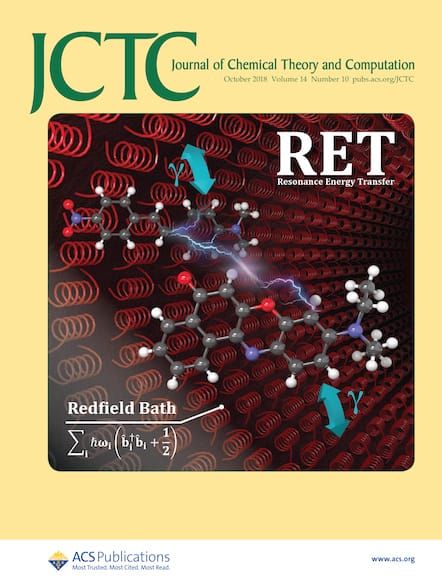超越玻恩-奥本海默理论的复体:关于扬-泰勒扭曲现象的新视角。
IF 5.5
1区 化学
Q2 CHEMISTRY, PHYSICAL
引用次数: 0
摘要
基于第一性原理的绝热势能面(PESs)和非绝热耦合项(NACTs)的绝热化形式(-á-vis)及其在几种光谱感兴趣的分子种类,三原子反应散射过程以及固体晶体的单位细胞中的应用主要与“真实”绝热的PESs, NACTs和绝热到绝热转换(ADT)矩阵有关。然而,对于三种类型的分子物种/过程/现象,这三种性质(绝热PESs、NACTs和ADT矩阵)通常表现为复数(实部和虚部)量,即(a)用复吸收势法计算的共振态(其中绝热PESs包含虚项),(b)自旋轨道矩阵元素(通常具有虚分量),(c) Jahn-Teller (JT)畸变现象中电子态通过核坐标的复杂混合(ADT矩阵变得复杂)。换句话说,复杂非核化的发展对于超越Born-Oppenheimer (BBO)理论的“真正”推广确实是必要的。目前的工作主要集中在情况“c”的复合BBO (CBBO)方法的制定上,如上所述,并且这种方法的可操作性已经探索了苯自由基阳离子(C6H6+),其中电子态之间的混合角包含实部和虚部,导致复合ADT vis-á-vis非绝热PESs矩阵。本文章由计算机程序翻译,如有差异,请以英文原文为准。
Complex Beyond Born-Oppenheimer Theory: A New Perspective on the Jahn-Teller Distortion Phenomenon.
The first-principles-based diabatization formalism of adiabatic potential energy surfaces (PESs) and nonadiabatic coupling terms (NACTs) vis-á-vis its applications in several molecular species of spectroscopic interest, triatomic reactive scattering processes, as well as unit cells of solid crystals are mainly associated with "real" adiabatic PESs, NACTs, and adiabatic-to-diabatic transformation (ADT) matrices. Nevertheless, these three properties (adiabatic PESs, NACTs, and ADT matrices) often appear as complex (both real and imaginary parts) quantities for three types of molecular species/processes/phenomena, namely, (a) resonance states calculated with the complex absorbing potential method (where adiabatic PESs contain imaginary terms), (b) spin-orbit matrix elements (often possess imaginary components), and (c) complex mixing of electronic states through nuclear coordinates in the Jahn-Teller (JT) distortion phenomenon (ADT matrix becomes complex). In other words, the development of complex diabatization is indeed necessary for "true" generalization of beyond Born-Oppenheimer (BBO) theory. The present work is mainly focused on the formulation of the Complex BBO (CBBO) methodology only for case 'c', as illustrated above, and the workability of such an approach has been explored for benzene radical cation (C6H6+), where the mixing angles between electronic states contain both real and imaginary parts, leading to complex ADT vis-á-vis diabatic PESs matrices.
求助全文
通过发布文献求助,成功后即可免费获取论文全文。
去求助
来源期刊

Journal of Chemical Theory and Computation
化学-物理:原子、分子和化学物理
CiteScore
9.90
自引率
16.40%
发文量
568
审稿时长
1 months
期刊介绍:
The Journal of Chemical Theory and Computation invites new and original contributions with the understanding that, if accepted, they will not be published elsewhere. Papers reporting new theories, methodology, and/or important applications in quantum electronic structure, molecular dynamics, and statistical mechanics are appropriate for submission to this Journal. Specific topics include advances in or applications of ab initio quantum mechanics, density functional theory, design and properties of new materials, surface science, Monte Carlo simulations, solvation models, QM/MM calculations, biomolecular structure prediction, and molecular dynamics in the broadest sense including gas-phase dynamics, ab initio dynamics, biomolecular dynamics, and protein folding. The Journal does not consider papers that are straightforward applications of known methods including DFT and molecular dynamics. The Journal favors submissions that include advances in theory or methodology with applications to compelling problems.
 求助内容:
求助内容: 应助结果提醒方式:
应助结果提醒方式:


